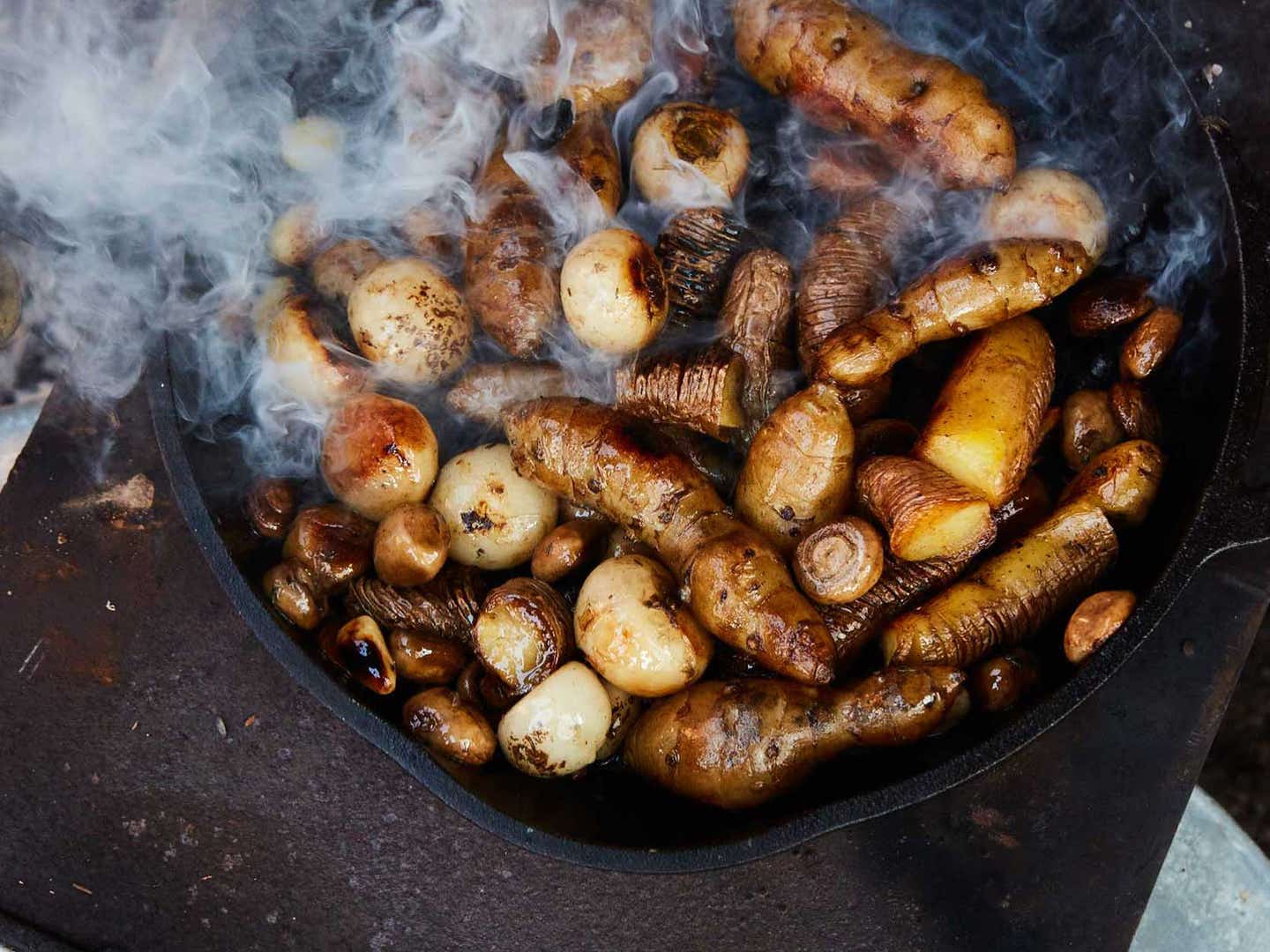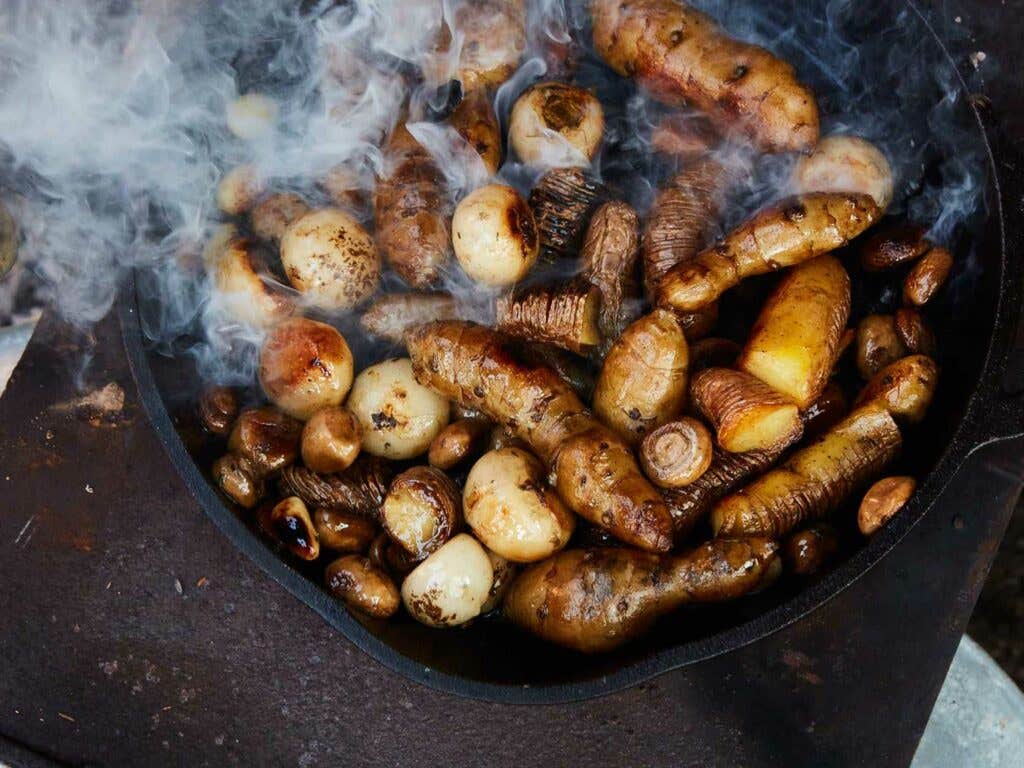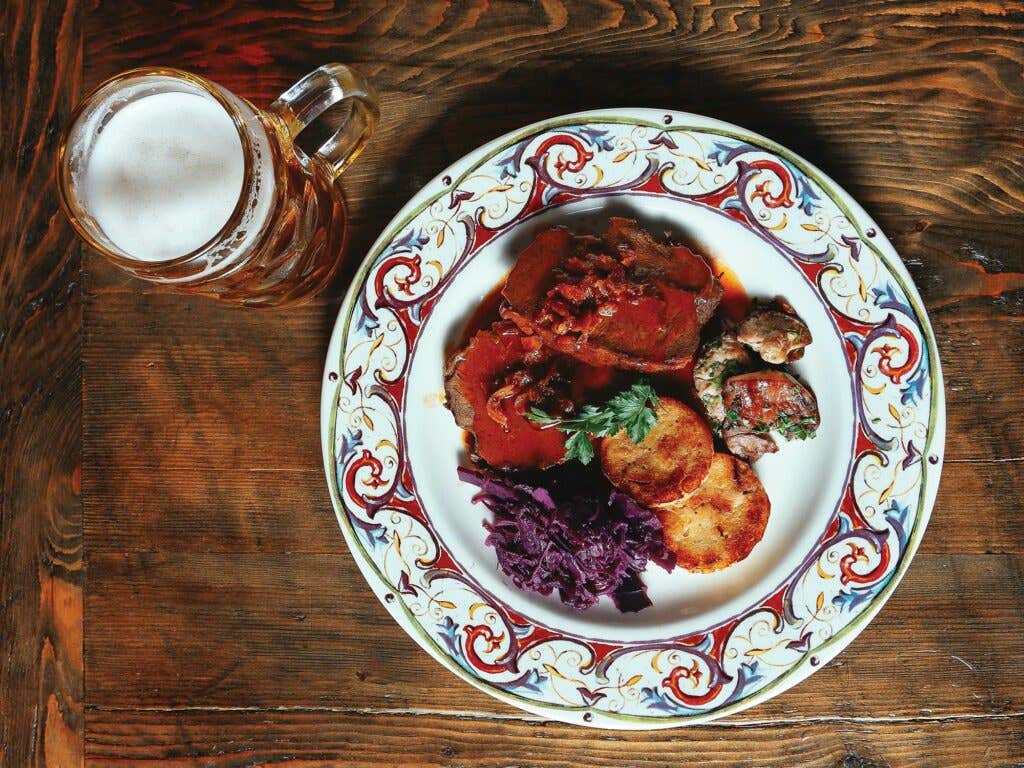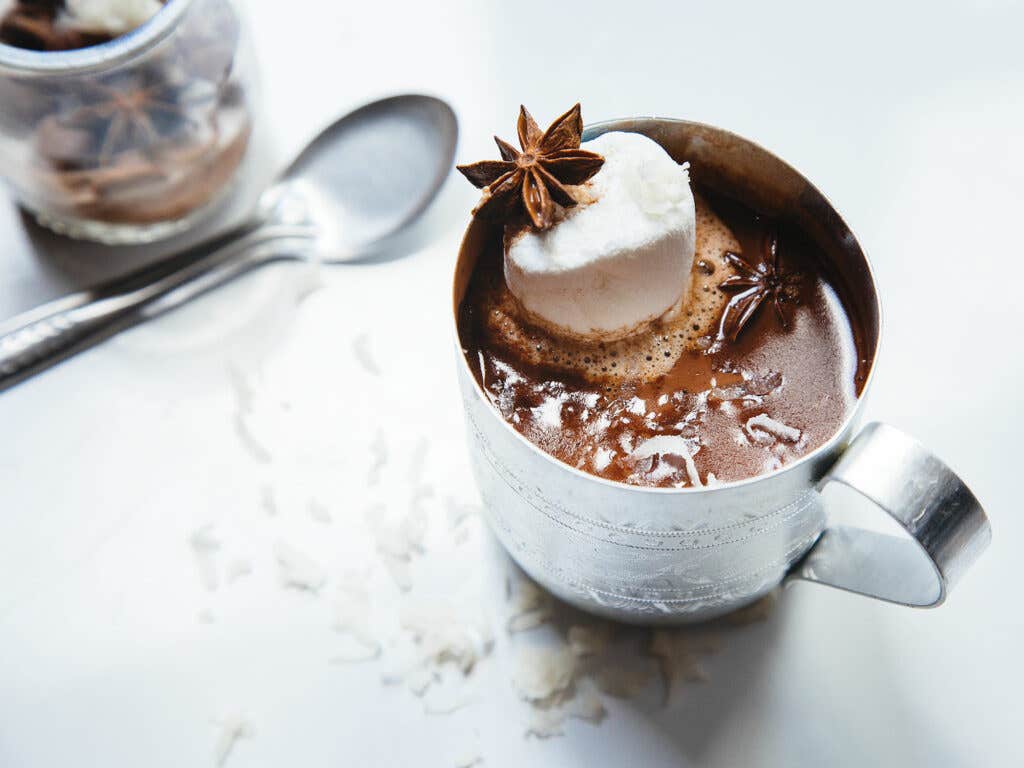
7 Dishes We Can’t Wait to Cook in February
Roasted roots, hot chocolates, and comforting soups to fight the frigid cold
February is marked by frigid temperatures and cold winds. The best way to combat it is hot soups and gooey bakes. When the oven is roaring and you can see the cheese melting over your casseroles, it warms the room and the heart. Here are all the things we can't wait to cook in February.

These stuffed potatoes, which tenderize first in foil packets then crisp up in cast iron atop the coals (or in the oven), are packed with a mix of roasted chestnuts, bacon, and juicy whole clams. "Clams and potatoes are a match made in heaven," says Joe Beef's Dave McMillan of the unusual, yet welcome addition of seafood to potatoes. "Just think about clam chowder." Get the recipe for Potatoes with Chestnuts and Clams »

Catching the drippings trickling down from cooking birds—a trick Joe Beef's Red Morin and Dave McMillan recommend especially midway through roasting, when the fat begins to render and run more rapidly from the skin—adds lustiness to a simple dish of roasted roots and mushrooms. Store-bought duck fat or lard is an easy cheat. Get the recipe for Roasted Sunchokes with Potatoes and Mushrooms »

Braised cabbage, a common side dish in Germany, classically has both sweet and sour flavors. In chef Thomas Ferlesch's version from Werkstatt restaurant in Brooklyn, a generous amount of fat—he prefers to use lard or duck fat for their rich texture—and juicy red wine round out the tart flavors of cranberry, vinegar, and apple cider. Get the recipe for Cider-Braised Red Cabbage »

Cardamom, cloves, and star anise replicate the sweeter flavors of a rich Thai curry. For this recipe, swap milk out for equal parts coconut milk and water—the coconut brings all the spices together. For a richer cocoa, omit the water and use 1 cup of coconut milk. Get the recipe for Thai-Spiced Hot Chocolate »
Flavored with wine and aromatics, this broth is similar to a nage or poaching liquid—you only need a shallow pool of it in each bowl. The broth features red yuzu kosho, a Japanese condiment made from citrus, yuzu, and chiles, which adds a round, tart flavor that is hard to replace. In a pinch, add a little more chile and lime zest. If head-on shrimp are hard to find—or you'd rather not fight with fish heads on New Year's Eve—nix them for more shelled shrimp. Get the recipe for Seafood Soup with Ginger and Yuzu Kosho »
It took chef Hooni Kim one year to perfect his recipe for dashi, which he uses as the base of this everyday Korean stew. Gochujang adds a subtle layer of heat to the broth, and doenjang boosts its richness and silkiness. Get the recipe for Doenjang Jjigae (Fermented Soybean Stew) »
Red quinoa, which is similar in flavor and texture to white quinoa, adds color to this warm, hearty winter salad. Get the recipe for Root Vegetable and Quinoa Salad with Pickled Sunchokes »
Keep Reading
Continue to Next Story










